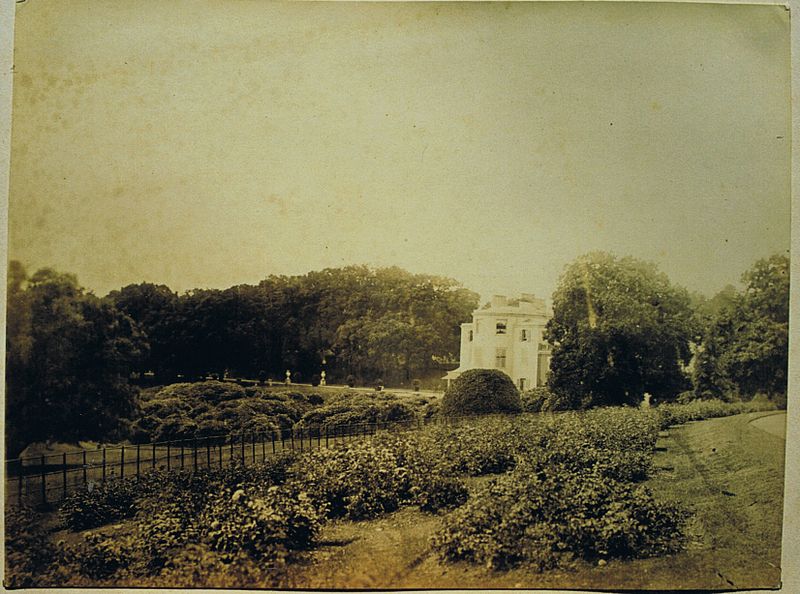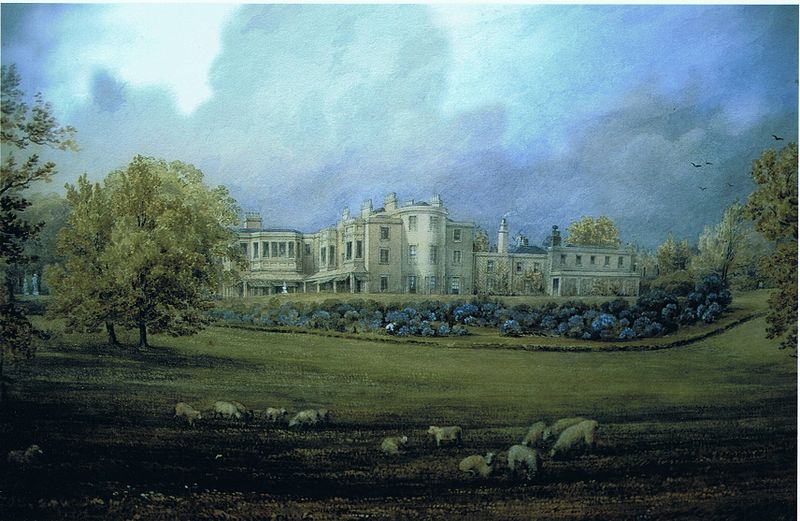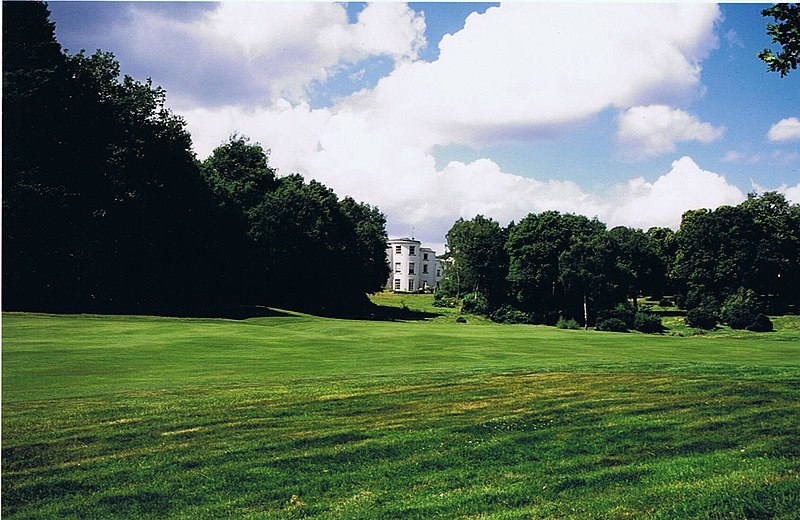Born around 1781 in Burnham Market, Norfolk to William and Mary Ransome. He was baptised on 25th February 1782 aged 0 at Holkham.

We know that William became a gamekeeper working for the Holkham Hall estate which has been run for generations by the Coke family. Many of our ancestors worked at Holkham Hall and this is where William met Frances Bacon who he would later go on to marry. William did not work inside the hall but as a gamekeeper in nearby Warham. The archives at Holkham Hall are extensive and they were able to provide some fascinating information relating to our family. Here is what they provided for William:
- Began employment as gamekeeper at Warham on 1st April 1807
- His salary was £40 per annum.
- At that time gamekeepers on the Holkham Estate were also entitled to seven free candles a week in winter and received ½ d for every wood pigeon they took to the estate office.
- Married Frances Bacon on 19th October 1807
- Frances was a housemaid at Holkham Hall January 1804 – 19 October 1807
- Frances was paid 8 guineas per annum which is around £8.40 or £840 per year in 2020 taking into consideration inflation.
- Frances spent some time in London as part of her housemaid duties to the Coke family. No travel expenses were recorded.
- Frances quit her service on her wedding day, 19th october 1807 which was common and an expectation when servants married each other.
William and Frances had their first child, a daughter, born Hester Frances Ransome on 2nd April 1809 and christened at St. Mary’s Magdalene church, Warham on 7th April 1809.


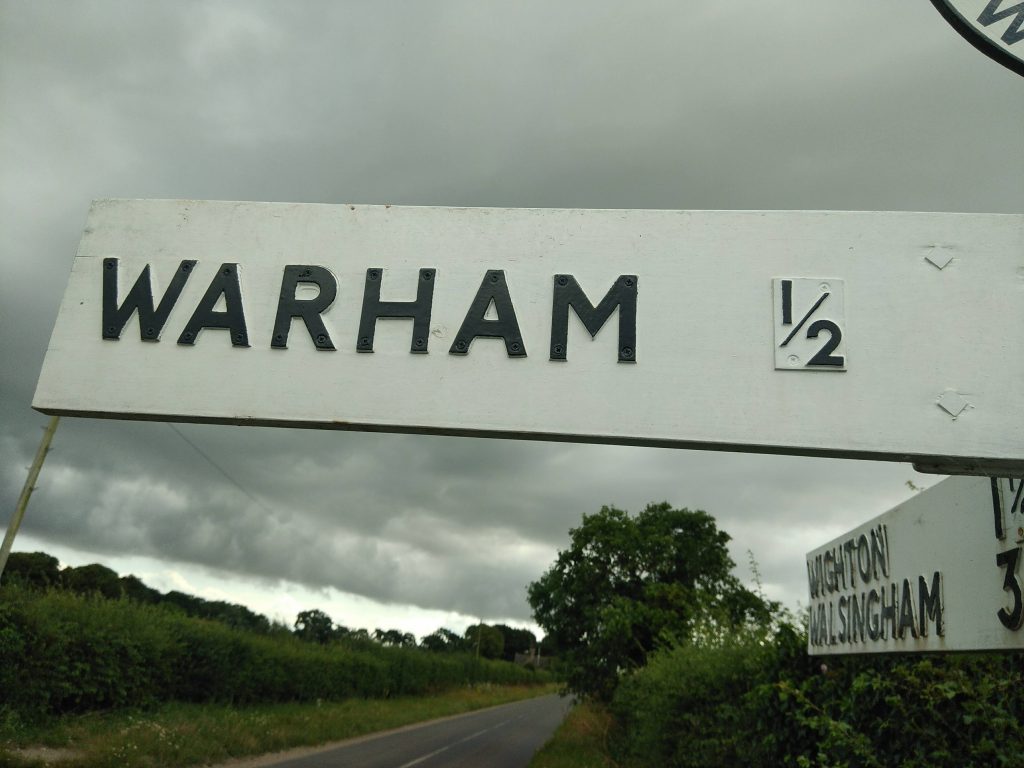
William and Frances had their second child, a son, born Joseph Ransome. Baptised on 28th March 1811 at St. Withburga’s church on the Holkham Hall estate. Considering his sister was born a few days before her baptism it is likely that Joseph was born a few days before in March.

The following is from 1813 but the data probably took a while to be collected so is probably relevant for the year or two before which would explain William Ransom’s exit from Warham by the time 1813 rolled round:
The following is taken from the Norfolk Chronicle dated 8th May 1813 and titled: “WELLS and WARHAM INCLOSURE” and relates to land allotted to local people as part of what was called “An Act for Allotting Lands in the parishes of Wells next the Sea, Warham All Saints, Warham Saint Mary Magdalen, and Warham Saint Mary the Virgin, in the county of Norfolk”. It starts off with the text “In pursuance of the directions of an Act passed in the forty-first year of the reign of his present Majesty King George The Third, doth hereby give notice, that he hath set out and appointed the Private Roads, Public Footways, and Public Bridleways hereinafter described, through and over the lands and grounds within said parish of Wells next the Sea, by the said first-mentioned Act intended or directed to be divided, allotted and inclosed.
It then goes to describe private roads and their locations starting at the first private road and mentions our own William Ransom when it gets to the twenty fifth private road. By trying to match the descriptions to an old map we may be able to locate exactly where William Ransom’s alloted land was. We have yet to do that. I have a rough idea that it was between Holkham and Warham but have not yet spent enough time on it.

Sometime late 1811 or early 1812 William and a pregnant Frances Ransome left Holkham with their two children Hester and Joseph, moving to Egham in Surrey. We believe they moved immediately to work at Portnall Park estate at Virginia Water, Surrey where he worked as a warrener (a kinf of gamekeeper). They spent the next 30 or so years here.
Portnall Park was owned by Rev. Thomas Bisse (c1754-1828). Bisse extended the mansion, as did the son, Colonel Bisse-Challoner (1788–1872), after 1828. Here is how George Prosser described the estate in 1828:
THE SEAT OF COLONEL BISSE CHALLONER
Portenhall,- or Portnall park, formerly belonged to the crown. In an act of parliament passed in the first year of the reign of Henry the Seventh, 1485, for resumption of all grants since the thirty-fourth of Henry the Sixth, is an exception of several made by that king; amongst which is one to Richard Pigot of the keepership of Potenhall park. In 1528 Henry the Eighth granted to Sir William Fitz-William, his park of Portnall, paying annually a red rose to the sheriff of Surrey. It is a manor within a manor, having the right and privilege of appointing a keeper. It became the property of Dean Jebb, and from him descended to his son David Jebb, esq. who sold it about the year 1795 to the Rev. Bisse. Mr. Bisse shortly afterwards pulled down the remaining wing of the ancient mansion, which had fallen into decay, and built a modern house on the same site. On the death of Mr. Bisse in 1828, the property devolved to his son Colonel Bisse Challoner, who has from his own plans effected a total change in the character of the estate, a great portion of which had been inclosed from the neighbouring heath. Extensive plantations of firs, &c. made by the present owner during his father’s lifetime have materially aided in the formation of the many delightful scenes this spot now presents.
The house has also been much improved and enlarged. The interior, though not very spacious, is replete with comfort and convenience, and is enriched with many works of art, among which are some splendid agate tables and marble vases of a superior order, which die present owner brought with him from Italy. On the west side have been added excellent and commodious brick-built offices. Near the house are some avenues of very stately old oak : through one of these avenues before the south-west front, a handsome gravel terrace walk, thirty feet wide by four hundred feet long, has been formed. It is ornamented with marble seats and statues on either side, after the manner of the Stahan gardens, and commands a beautiful prospect. In the vale below two sheets of water recently formed contribute much to the effect of the local scenery. The park, comprising nearly four hundred acres, is beautifully undulated, and diversified with timber and flourishing plantations, through which extensive gravel walks and green rides are formed ; in well-chosen situations are seats and rustic retreats, commanding extensive and beautifully varied views over the Surrey hills on the one side, and over the far-famed lake of Virginia Water on the other. The entrance lodge is built in a peculiarly elegant style, and the approach to the house is about three quarters of a mile through some thriving plantations. The gardens and farm to the south-west of the house are lately erected on a very convenient and elegant plan. Portnall park is on the Bagshot road, three miles distant from Egham, and twenty-one from London.
George Prosser’s description of 1828
William worked as a gamekeeper for Thomas-Chaloner Bisse-Challoner (1788–1872) who was a British militia colonel who enlarged the former country house and landscape garden at Portnall Park, Virginia Water (then considered Egham Heath), which laid the foundation for the Wentworth Estate and housing development in the surrounding area. He was appointed a Justice of the Peace (J.P.) of Berkshire (1831) and of Surrey, and a Deputy Lieutenant (D.L.) for Surrey. He became High Sheriff of Surrey in 1838. The interesting link back to our family on this is that William’s employer Colonel Thomas-Chaloner Bisse-Challoner was residing when poacher’s appeared in court accused of poaching on Challoner’s land and caught by William Ransome.
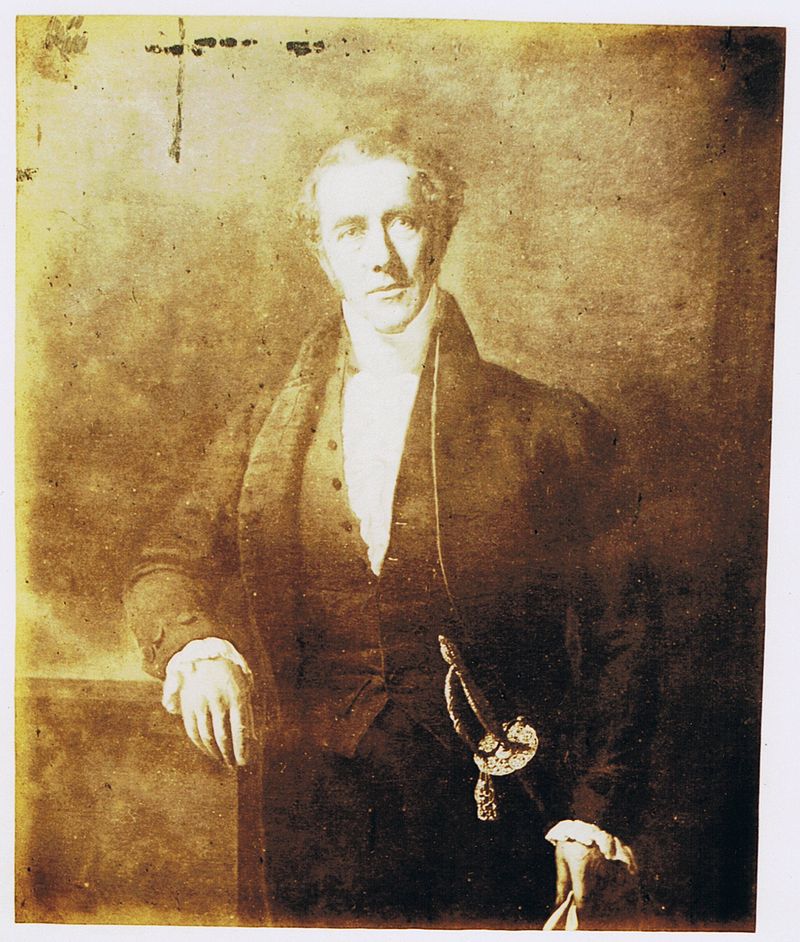
William and Frances had their third child, a son, born William Ransom we believe in 1812. Baptised on 1st October 1814 at St. John the Baptist Church, Egham, Surrey. Note the lack of an ‘e’ on the end of Ransome. From this timeframe this appears to become the way our family spelt Ransome. William’s brother Joseph and sister Hester were Ransome but from William jr. our branch becomes Ransom. Joseph appears to have carried on the Ransome name. I have checked this many times and there is hard evidence it is the same family, just that moving to a new place triggers the change in spelling. This could be down to the local registrar and how they spelt it – from then on further descendants were taught to spell it Ransom.
William and Frances had their fourth child, a daughter, born Mary Ann Ransom who was baptised on 1st October 1814 at St. John the Baptist church, Egham, Surrey.
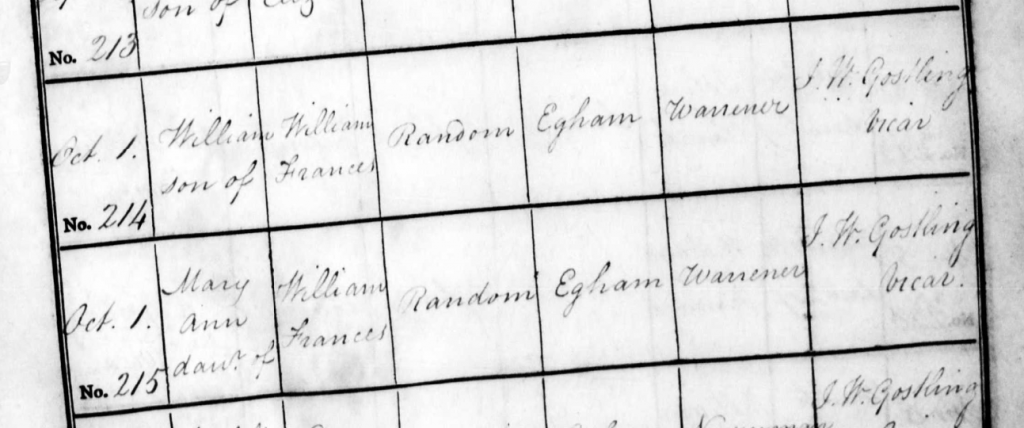

The 1841 census rounded ages downwards to the preceding five years. It is worth noting that further down the above 1841 census listed as living at the cottages on the Portnall estate are the Wellbelove family. Later in 1861 census William and Frances’s son William (born 1812) is listed as living in the workhouse. Some of the other names of pauper’s in the workhouse at the same time were Wellbelove children and Beauchamp – both names of known families in the Egham area who had been working for the various estates – mainly Windsor Great Park estate during these times. The book “Virginia Water – Neighbour to Windsor Great Park” by Dorothy Davis goes into great detail on how many workers wages got to a point where they could barely afford to feed their families even in times of employ. This could explain why William ended up in the workhouse. It also has detail on the above surnames also.

On 12th March 1845 tragedy struck the Ransome family when Frances (Fanny) was found dead on the Portnall estate near the Lodge. Her death certificate shows her cause of death as Found Drowned by Verdict of Jury Godalming Coroner’s Court. She was buried on 18 Mar 1845 in Christ Church, Virginia Water, Surrey. An inquest was held and this is what was reported in the newspaper:
EGHAM. CORONER’S INQUEST.
On Saturday last an inquest was held at the Wheat Sheaf Inn, Virginia Water, Egham, before C. J. Woods, Esq., coroner, on the body of Frances Ransom, aged 68 years. It appeared from the evidence that the deceased with her husband, who is a warrener, lived in a lodge under Colonel Challoner, and that the deceased usually attended the gate. On the Wednesday morning the husband left home about ten minutes past six o’clock, at which time his wife appeared as well and cheerful as usual. About ten o’clock in the morning he came home, and thought it very strange to find the candle burning, and his wife nowhere to be seen. He made inquiries of a man who was working in the road, but could hear nothing of his wife. About three o’clock the body of the poor woman was discovered in a pool of water about forty yards from her house, quite dead, and it appeared to have been there several hours. Some mystery attaches to the circumstances, as the water in the pool was but six inches deep; deceased could have had no business near the place, and no cause could be assigned for her having destroyed herself. After a long investigation, the jury returned their verdict, “Found drowned, but by what means they had no evidence to show”
A newspaper report from Berkshire Chronicle 22 March 1845:






The man who found Frances, Charles Froud lived close by and appears on the 1841 Census as living at ‘Parsonage, Chertsey, Virginia Water’. The Parsonage was indeed a building next to the Christ Church on maps. He was age 44 when he found her. The reason I have mentioned him is that he states he knew her for 30 years and spoke to her almost every day. In 1827 he was accused of rape but after a trial was acquitted. Although this is not our family I think it is worth mentioning and exploring the character and lives of the people who knew our family well to see what kind of things took place. William and Frances Ransom would have known Froud by this time around 10 years and most likely known of this incident and maybe they were even one of the character witnesses the article mentions at the end. This was taken from the Morning Advertiser 07 December 1827:







Just a year before Frances’s death Froud was listed in Bell’s New Weekly Messenger 14 April 1844 as an insolvent debtor:

A few years later Charles Froud committed suicide by hanging himself after a row with his wife. He was 65, Frances had died 21 years earlier and William 4 years earlier. This from the Windsor and Eton Express 05 May 1866:


Just 6 months after Frances’s death, William was beaten by a couple of thugs.


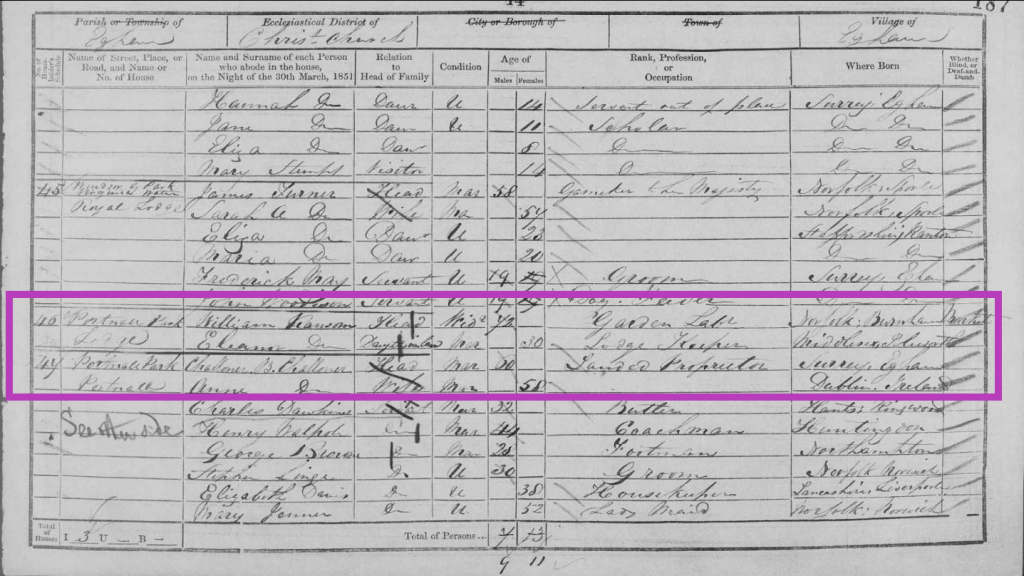
Frances had lived with her husband William at Portnall Lodge up until her death. In the 1851 census William Ransom is still living at the lodge and also listed is his daughter-in-law Eleanor “Ellen” Ransom who is the lodge keeper. Eleanor was from Isleworth, Middlesex and it is at this point we see the link between those Ransome’s that we know from Holkham and the Ransom’s that we know from Brentford, Middlesex. Eleanor is that link. William jr (b. 1812) marrying her is the pull on the family to Middlesex.
By the 1861 census William Ransome was listed as a pauper living at Windsor Union Workhouse, Berkshire. his place of birth is listed as Burnham Market. Other people listed living in the same place are Wellbelove children and Beauchamp – as mentioned further up both names of known families in the Egham area who had been working for the various estates – mainly Windsor Great Park estate during these times. it was common for even those in employ to be poor enough to need accomodation for their children in the workhouse. William died a year later in 1862 so it could be he was in the workhouse for failing health or other medical reasons or was just too ill to work and with no great savings the workhouse was his only option. We do not know for sure.

On 21st January 1862 William died at Windsor, Berkshire. We have no records to say it was in the workhouse but it would seem possible.

